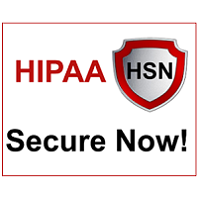 Telehealth Is Not Everyone’s First Choice
Telehealth Is Not Everyone’s First Choice
By Art Gross, President and CEO, HIPAA Secure Now!
Twitter: @HIPAASecureNow
Read other articles by this author
With regard to telehealth statistics, we saw a great rise in the number of participants during the past year with COVID-19. It was a perfect solution for many people, especially if leaving their homes meant putting them in danger due to their high-risk factors linked to the virus.
Equally interesting were the situations when those same people who were perhaps at risk due to age, were not as willing to embrace an electronic experience as a younger patient might. Familiarity with technology or access to it was definitely going to factor in, but it also might be the not-so-obvious factor of the relationship that exists between two humans. If you’ve been a patient for many years at a healthcare facility, you have likely established a comfortable rhythm with the provider or team that you see at an office for your care. As we all know, healthcare is discussing your most private details with a trusted person, and doing that via a computer screen with a potential stranger might be off-putting to many people.
We also need to consider that for patients who do not speak English as their first language, there are other cues that can be taken from an in-person visit. Translation happens with body language and the ability to better explain when actually face to face.
And it isn’t just about what the patient likes when it comes to healthcare. On a recent Healthcare IT News interview with Windrose Health Network’s CEO Scott Rollett discussed how their clinicians actually preferred in-person, or live shifts as opposed to the telehealth option. He felt it said a lot when they were willing to put their own health at risk to treat people in person. This of course was early on in the pandemic when less was known, but a telling sign nonetheless.
We will know in time how fast and successful the adoption of telehealth is as time goes on. One thing is for sure, it was a great option to have, especially in a time of uncertainty about being public, and as we tried to stop the spread of the COVID-19 virus.
This article was originally published on HIPAA Secure Now! and is republished here with permission. HIPAA Secure Now offers annual online subscriptions to help covered entities and business associates keep up with compliance. Learn more here.
 HIPAA Secure Now! now offers PHIshMD training for CEs and BAs to help protect your organization from security threats.
HIPAA Secure Now! now offers PHIshMD training for CEs and BAs to help protect your organization from security threats.
Technology safeguards put a virtual wall around your network, but what happens when the bad actors climb over that wall? It’s up to your employees. Over 90% of breaches get caused by human error according to Kaspersky Lab, and if you’re not educating users HOW to protect your organization in this ever-changing threat landscape, your organization could be next. LEARN MORE
